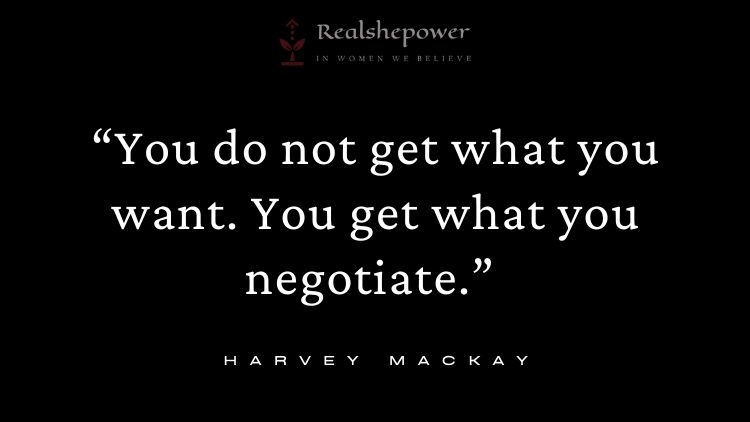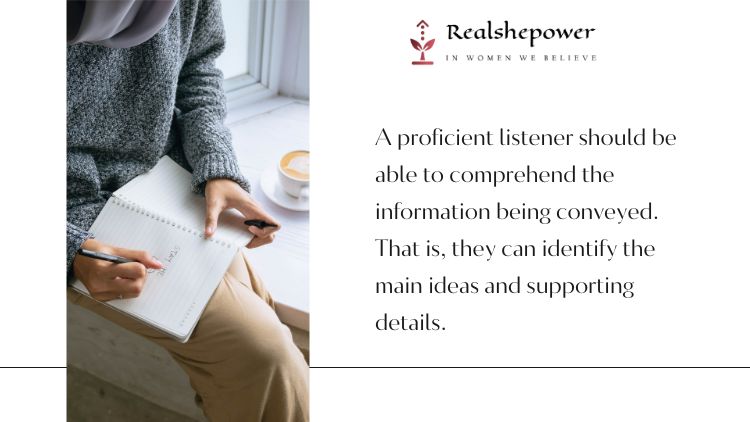Negotiating in the Workplace: Tricks and Tips for Women


As a woman in the workplace, you’re no stranger to the challenges of negotiating for what you want and deserve. Whether it’s a raise, a promotion, or simply better working conditions, you want to make sure that your voice is heard and your needs are met. But how do you go about doing this in a way that is effective and empowering?
To help you in your negotiating journey, I’ve put together a list of tips and tricks that are backed by research and experience. So, without further ado, let’s dive in!
Table of Contents
1. Do your research:
Before entering into any negotiation, it’s important to have a clear understanding of what you’re negotiating for and what the other person is likely to counter with. This means doing your homework on industry standards, the company’s policies, and what the other person’s interests are. This way, you’ll be prepared to make a strong case for your position and to respond to any objections that may come up.
Here are five examples of doing your research:
- Industry standards: Research the average salary for your role in your area, as well as the typical benefits and perks offered by similar companies. Use this information to support your case for a raise or better benefits package.
- Company policies: Review the company’s policies on compensation, promotions, and performance evaluations to understand the rules and processes that may impact your negotiation.
- Competitor practices: Investigate what other companies in your industry are offering in terms of compensation, benefits, and opportunities. This information can be useful when negotiating with your current employer or when exploring job opportunities elsewhere.
- The other person’s interests: Consider what the other person is likely to want from the negotiation and what their priorities are. For example, if your boss is focused on keeping expenses low, you may need to present your case for a raise in a way that emphasizes the cost savings you bring to the company.
- Historical data: Look for patterns in past negotiations to get a sense of what has worked well and what hasn’t. For example, if you know that your boss typically responds well to data and statistics, be sure to bring plenty of evidence to support your case.
2. Know your worth:
One of the most important aspects of negotiating is having a clear understanding of your own worth. This means not only knowing what you’re currently making, but also what you’re worth in the marketplace. Use salary calculators, job search engines, and industry benchmarks to get a sense of what you can realistically ask for.
Here are five ways to know your worth at workplace:
- Research industry benchmarks: Use resources such as Glassdoor, Payscale, and the Bureau of Labor Statistics to compare your current salary to the average for your position in your area.
- Review your accomplishments: Make a list of your key achievements and contributions to the company, including projects you’ve led, new business you’ve brought in, and any awards or recognition you’ve received.
- Look at your skills and experience: Consider the skills and experience you bring to your role and how they compare to others in your field. For example, if you have additional certifications or advanced degrees, these can increase your worth.
- Know your company’s culture: Consider the company’s values, culture, and budget when negotiating your compensation. For example, if the company is known for paying above-average salaries, you may be able to ask for more.
- Network with others in your field: Talking to others in your industry, such as alumni from your university or colleagues at other companies, can give you a better understanding of the market and what you can realistically ask for.
Read: The Women’s Networking Guide to Breaking Barriers and Achieving Success

3. Set realistic expectations:
Before you start negotiating, it’s important to set realistic expectations for what you want to achieve. If you set your sights too high, you may be disappointed, and if you set your sights too low, you may not get what you truly deserve. Be honest with yourself about what you want and what you’re willing to accept.
Here are five realistic expectations that you must know:
- Setting a realistic salary increase expectation: Instead of asking for a 25% increase, which may be unrealistic, consider asking for a more reasonable increase based on your research and market data, such as a 10% increase.
- Realistic work-life balance expectations: Instead of asking for a completely flexible schedule, consider asking for a more realistic arrangement, such as flexible work hours or the ability to work from home one day a week.
- Realistic job responsibilities: Instead of asking for a complete overhaul of your job responsibilities, consider asking for a more achievable change, such as taking on additional projects that align with your skills and interests.
- Realistic benefits package: Instead of asking for an extensive benefits package, consider asking for a more achievable package, such as an increased contribution to your health insurance or a better retirement plan.
- Realistic timeline: Instead of expecting immediate results, consider setting a more realistic timeline for negotiations, such as a 6-month review or a follow-up meeting to discuss progress and further opportunities.
Remember, setting realistic expectations is important in any negotiation, as it allows you to be prepared and focused on what you want to achieve.
4. Be confident:
Confidence is key when negotiating. When you’re confident in your position, you’ll be more likely to speak up and make your case effectively.
Here are five ways to “Be Confident” in negotiations:
- Practice your pitch: Before the negotiation, practice your argument several times to make sure you’re comfortable with the language and the flow of the conversation.
- Prepare responses to objections: Anticipate potential objections and have responses ready. This will show that you’re prepared and have thought through your position.
- Dress professionally: Choose attire that makes you feel confident and in control. Consider wearing power colors like black, navy, or red, or dressing in a way that aligns with your professional brand.
- Use body language: Good posture, confident eye contact, and assertive gestures can communicate confidence and show that you believe in your position.
- Surround yourself with supportive people: Surround yourself with friends, family, or mentors who believe in you and your abilities. Having a support system can give you the confidence boost you need before entering into negotiations.
5. Use persuasive language:

When negotiating, it’s important to use language that is persuasive and compelling. Use phrases like “I believe that” and “I think” instead of “I need” or “I want”. This will make you come across as more confident and assertive, and will make it more likely that the other person will be open to your request.
Here are five examples of persuasive language that can be used during negotiations:
- “I believe that my contributions have been significant to the company and I think that a raise would be appropriate.”
- “I have done extensive research and I am confident that the market rate for my role is higher than my current salary. I think that we should consider adjusting my compensation to reflect the industry standard.”
- “I understand that budgets are tight, but I believe that investing in my professional development will benefit the company in the long run. I think that a training program would be a wise investment.”
- “I think that a flexible work arrangement would allow me to better balance my personal and professional responsibilities. I believe that this would improve my overall job satisfaction and productivity.”
- “I understand your concerns about the budget, but I think that a modest increase in compensation would help attract and retain top talent. I believe that this would ultimately benefit the company in the long run.”
To sum up, using persuasive language can help you come across as confident, assertive, and more likely to get what you want in a negotiation. By framing your requests in a positive and convincing way, you can increase your chances of success.
6. Ask open-ended questions:
Ask questions that encourage the other party to share their perspective, motivations, and goals. This information can help you understand their point of view and find common ground for a mutually beneficial agreement.
Here are five examples of open-ended questions you can use in a negotiation:
- “What are your main priorities in this negotiation?”
- “Can you tell me more about your concerns and how you see this issue being resolved?”
- “What are your expectations for this outcome?”
- “Can you help me understand your perspective on this situation?”
- “What is the most important factor for you in reaching an agreement?”
Remember, the goal of open-ended questions is to encourage the other party to share their thoughts and motivations. By understanding their perspective, you can find common ground and reach a mutually beneficial agreement.
7. Listen actively:

Pay attention to what the other party is saying and respond thoughtfully. This will demonstrate that you value their opinions and help you build a rapport with them.
Here are five examples of actively listening in a negotiation:
- Paraphrasing: Repeat back what you heard to ensure you understand the other party’s perspective. For example, “So, I hear that you are concerned about the impact of a salary increase on the company’s budget. Is that correct?”
- Asking clarifying questions: If something is unclear, ask questions to clarify the other party’s position. For example, “Can you help me understand the specific challenges you are facing with the budget?”
- Nodding and making eye contact: Show that you are engaged in the conversation by making eye contact and nodding your head.
- Reflecting emotions: Acknowledge the other party’s emotions and respond in a way that demonstrates empathy. For example, “I can understand why you are feeling frustrated. Let’s see if we can find a solution that meets both of our needs.”
- Avoiding distractions: Put away your phone, close your laptop, and give the other party your full attention. Show that you respect their time and value their input.
In conclusion, actively listening is a critical component of effective negotiation. By demonstrating that you value the other party’s opinions and showing empathy, you can build a rapport and find mutually beneficial solutions.
8. Be flexible:
Negotiations are a two-way process, and it’s essential to be willing to compromise. Be open to considering alternative solutions that meet both your needs and the needs of the other party.
Here are five examples of being flexible in a negotiation:
- If a promotion is not currently available, can we discuss opportunities for professional development or additional training to advance my career?
- If a full-time schedule is not possible, can we consider a part-time or flexible schedule that accommodates my other commitments?
- If a higher salary is not within the budget, can we discuss other benefits such as telecommuting options, health insurance coverage, or retirement benefits?
- If a raise is not possible, can we discuss opportunities for bonuses or commission-based compensation?
- If a relocation package is not an option, can we discuss assistance with moving expenses or a flexible schedule to ease the transition?
In each of these examples, the goal is to find alternative solutions that meet both the individual’s needs and the needs of the organization. By being open to considering different options, both parties can find a mutually beneficial agreement.
Read: 5 Proven Strategies for Negotiating Your Salary and Getting the Compensation You Deserve

9. Don’t be afraid to walk away:
If the negotiation is not going well, and you are not getting what you deserve, be prepared to walk away. Sometimes, it’s better to wait for a better opportunity than to accept a deal that is not in your best interests. For example, you can say, “I appreciate your time, but I cannot accept a deal that does not meet my needs. I will consider other opportunities that are a better fit for me.”
Here are five examples of not being afraid to walk away in a negotiation:
- “I have received other offers that align more with my expectations, so I cannot accept a deal that does not meet my requirements.”
- “I appreciate your efforts, but I need a compensation package that is fair and reflective of my experience and expertise.”
- “I am not comfortable accepting this offer as it does not address my primary concerns, such as work-life balance or professional development opportunities.”
- “I have been considering this offer carefully and I don’t believe it aligns with my career goals. I need to keep exploring other options that are a better fit for me.”
- “I understand your constraints, but I cannot accept a deal that does not compensate me fairly for my contributions. I will continue my job search for a company that values my work and compensates me accordingly.”
In all of these examples, the key is to be polite and professional while firmly standing your ground. If a deal is not in your best interests, it’s better to walk away and explore other options.
Negotiating in the workplace can be a challenge, especially for women who are often still facing gender bias and discrimination. However, with these tips and tricks, you can increase your chances of success and make sure that your voice is heard. So, go forth and negotiate with confidence, and remember that you are worth it!
Also Read: 7 Proven Strategies for Advancing Your Career as a Woman

You can now write for RSP Magazine and be a part of the community. Share your stories and opinions with us here.
